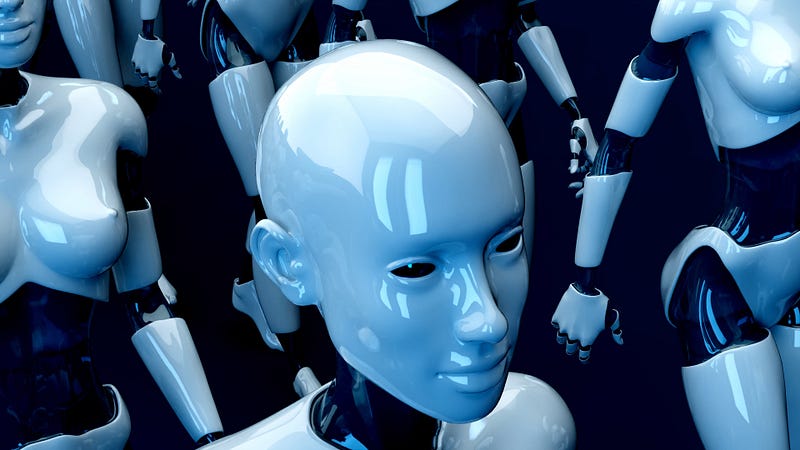Is AI Advancing Too Rapidly? Addressing Concerns and Insights
Written on
The Rise of ChatGPT
What makes ChatGPT such a sensation in the tech world? Prior to the introduction of ChatGPT, Google had rolled out a sophisticated language model and chatbot named LaMDA in 2020. LaMDA was designed to engage in fluid conversations across a vast array of topics, mirroring human interactions.

Despite its capabilities, Google chose not to make LaMDA publicly available, citing concerns over factual accuracy. They were uncertain if LaMDA consistently provided accurate information, a common challenge for language models. Consequently, LaMDA did not capture public interest.
Conversely, OpenAI opted to launch an early version of ChatGPT, fully aware of its imperfections. The demand in the market compelled them to release it. Notably, ChatGPT builds on Google's Transformer architecture. But what accounts for ChatGPT's ability to capture widespread attention, despite initial inaccuracies?
For starters, ChatGPT offers a user-friendly web interface, making it accessible to novices. Additionally, it’s free and showcases impressive capabilities as a generative AI, creating content based on user prompts. This practical utility has led to increased adoption among individuals and businesses alike, with many integrating the ChatGPT API into their offerings.
If ChatGPT were limited to corporate use, it likely wouldn't have achieved such public visibility. Its widespread impact is reflected in the abundant content shared across social media platforms. If you haven't yet utilized ChatGPT in your work, it’s time to dive in, as its integration into daily life is only set to grow.
Generative AI's Rapid Evolution
The remarkable success of ChatGPT aligns with the accelerated development of generative AI technologies across the industry. For instance, on March 14, 2023, Google unveiled the PaLM API, a new tool designed to facilitate and secure experimentation with its language models.
On March 15, 2023, OpenAI launched GPT-4, which introduced groundbreaking features, including the ability to interpret image inputs—ranging from photographs to handwritten designs for websites.
Demo 1: Requesting GPT-4 to interpret a humorous comic:

Demo 2: GPT-4 quickly translating a handwritten website mock-up into code:

Following the release of GPT-4, Microsoft began incorporating it into various products. One notable example is Auto-GPT, an experimental open-source initiative aimed at making GPT-4 fully autonomous by breaking projects into subtasks.
On March 16, 2023, Baidu revealed its own large language model, the Ernie Bot, marking a significant step in China's AI landscape.

Baidu's CEO, Robin Li, explained the decision to launch Ernie Bot, emphasizing the high demand for AI applications in today's market. Additionally, AI image generation firm Midjourney unveiled its fifth version on the same day.
Midjourney v4 vs. v5:
Prompt: “a portrait of an old man with folded hands on lap”

The right image represents a realistic depiction generated by Midjourney v5, showcasing the advancements in AI-generated imagery.
Concerns Surrounding AI Development
OpenAI is on a mission to develop artificial general intelligence (AGI)—AI systems that surpass human intelligence—ensuring it benefits all of humanity.
Sam Altman, OpenAI's CEO, has expressed his commitment to advancing AGI.
Some experts argue that GPT-4 may represent the nascent stages of AGI. However, the rapid pace of AI advancements raises significant concerns. Elon Musk famously warned back in 2008, "Mark my words. AI is far more dangerous than nukes." He stressed the necessity for a regulatory body to oversee the safe development of AI.
Sam Altman has echoed these sentiments, highlighting the importance of regulations to ensure AI is developed responsibly.
Final Reflections
The current trajectory of AI development appears irreversible. While the timeline for achieving AGI remains uncertain, so too does our understanding of AI’s potential dangers. Thus far, there's no evidence suggesting AI is developing consciousness, and we cannot predict if this will change as the technology evolves.
Society needs to comprehend the implications of AI tools and how to adapt alongside this transformative technology. Whether as individuals or organizations, we should embrace AI to enhance our lives, work, and businesses.
The first video titled "Peter Diamandis: Are We Moving Too Fast With AI?!" discusses the implications of rapid AI advancements and raises important questions about our pace of development.
The second video, "Should we slow down AI research? | Debate with Meta, IBM, FHI, FLI," features a debate among experts regarding the need for a more measured approach to AI research.